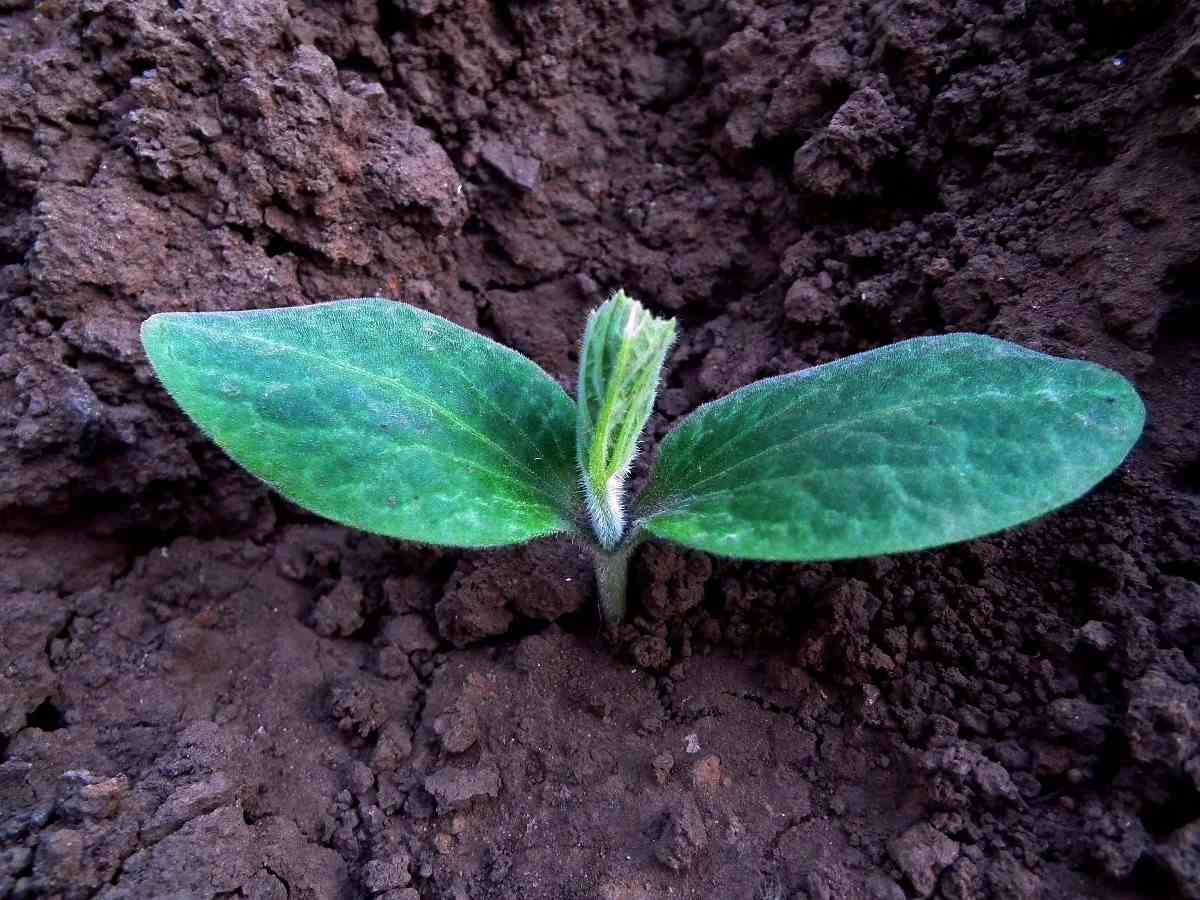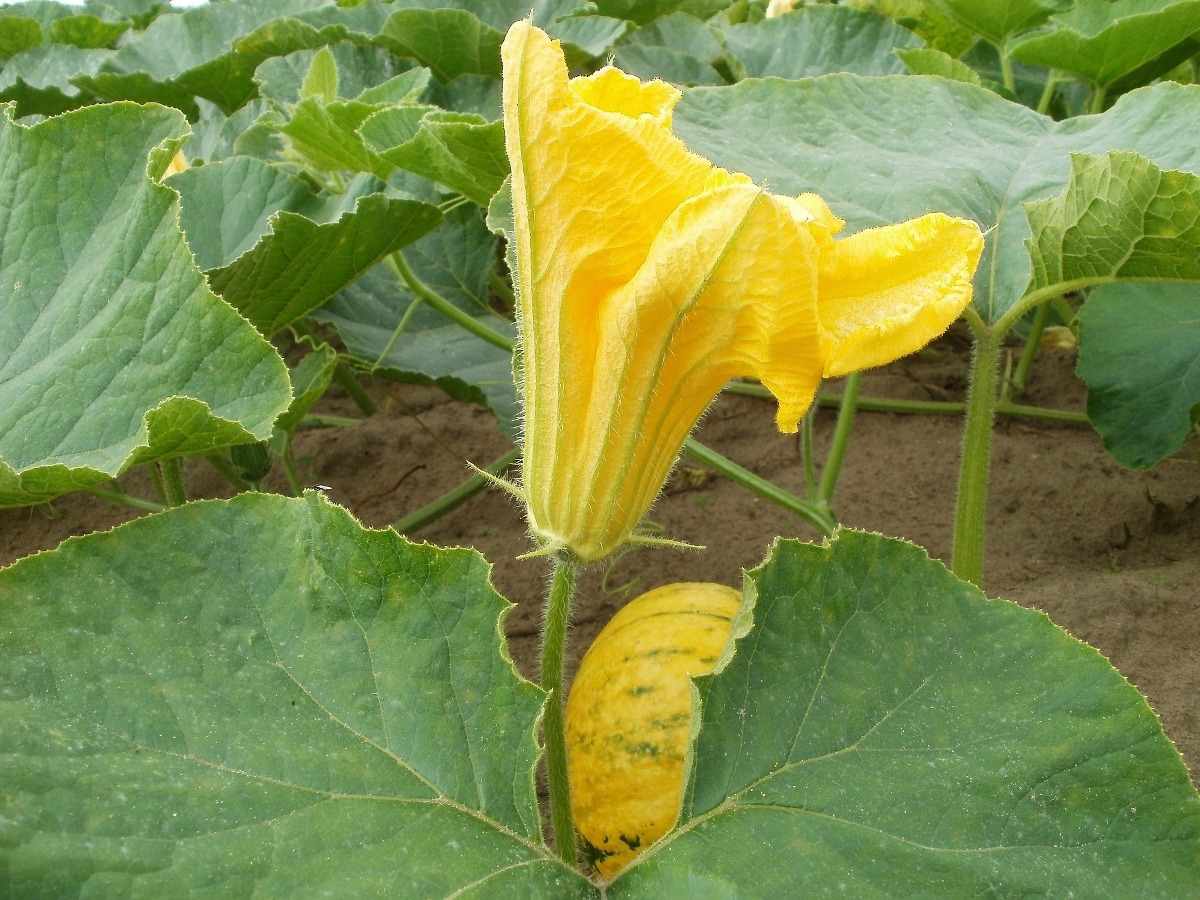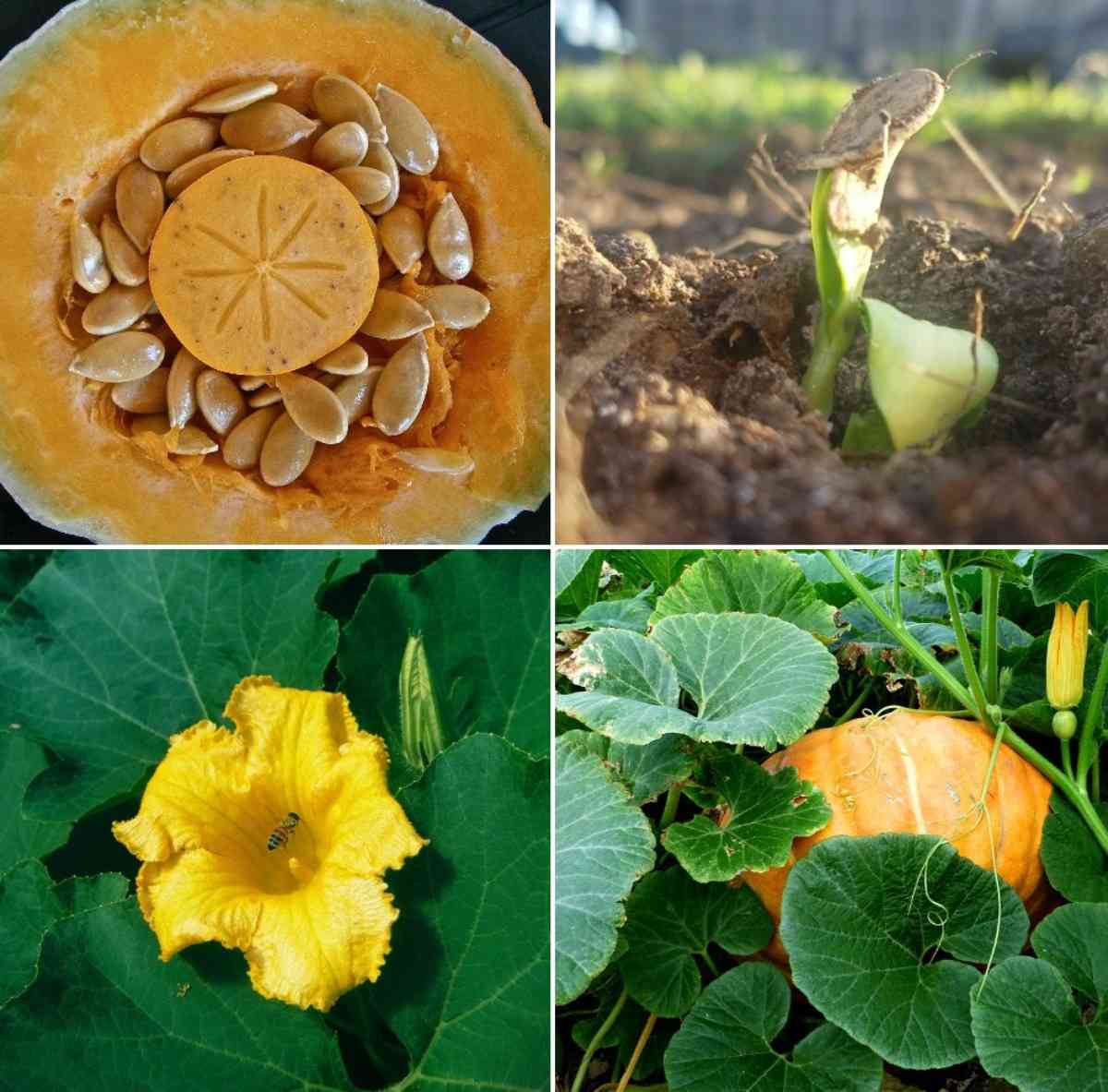Introduction to pumpkin seed germination process: Pumpkins come in unique shapes, sizes and hues, and diverse flavors. Pumpkins are a rich source of Vitamin A, potassium and fiber. Growing pumpkins is easy and inexpensive since they grow well in different regions. In this article we also discussed below topics;
- Process of growing Pumpkins from seed
- Time to take Pumpkin seeds take to germinate
- Pumpkin seeds germination period
- Tips for Pumpkin seeds germination
- Best times to plant Pumpkin
- Germinate Pumpkin seeds indoors
- Pumpkin seeds saving
- Pumpkin seed germination time
- Pumpkin seed germination temperature
- Process for germinating Pumpkin seeds
- Paper towel germination method for growing Pumpkin
A guide to pumpkin seed germination process
Soil condition for growing pumpkins
Pumpkins grow best in neutral or slightly acidic soil. Choose a sunny location with well-drained soil for growing pumpkins. And add neem cake or neem solution to the soil a week before planting. Mix organic matter, wood ash and well-rotted manure into the garden soil. Pumpkins grow best when sown on a raised soil base with a depressed ring below to maintain it moist but well-drained.

Ideal location for growing pumpkins
Pumpkins grow best when direct-seeded, and prefer full sun and well-drained soil with a pH level of 7.0. Spread about 2 inches of compost or manure over the soil and work it into a depth of 6 to 8 inches. Pumpkins are a vining plant and sprawl almost anywhere you let them.
Essentials for pumpkin seed germination
The essentials for good pumpkin seed germination are;
Viable seeds – Good seeds that are not hollow, that germination rates are poor.
Soil – A good soil, seed starting mixture that is light and sterilized.
Water – The soil medium must be moist, but not soaked.
Warmth – The ideal seed starting temperature ranges are between 80 and 85°F. Seeds can be germinated outside of this range, but the further away from the ideal range, the lower the seed germination rate.
Factors affect seed germination process
The time a seed takes to germinate depends on several factors, such as soil temperature, humidity levels, and air circulation. The factors that affect seed germination will be given below;
Soil Temperature – You can find the seed germination rate on the seed packet itself. For example, the seed germination rate is about 95%, and then you can expect 95 seeds to sprout out of every 100 seeds that you planted.
The minimum temperature for pumpkin seed germination is 60°F (15.6 degrees Celsius). If the soil is any colder than this, you will see low seed germination rates. The maximum temperature for pumpkin seed germination is 105°F (40.6 degrees Celsius). If the soil is any warmer than this, seed germination rates will decrease. Combined with high humidity, high temperatures can encourage the growth of mold, which is another threat to plants.
The ideal temperature for pumpkin seed germination is between 85°F (29.4 degrees Celsius) and 95°F (35 degrees Celsius).
Humidity – Humidity is also an important factor to consider when germinating pumpkin seeds. If the air is too dry, then the soil will dry out faster, and the pumpkin seeds will have trouble germinating – they may even die. If the air is too humid, then the soil will stay too wet, particularly if you over water the soil. And this can lead to damping off, which occurs when mold or other pathogens affect seeds or seedlings.
Air Circulation – Seeds need air, just like seedlings and established pumpkin plants.
Pumpkins seed germination process
Seeds germination is a very important step to the growing pumpkin. You need about 100 to 120 days for most varieties of pumpkins. Giant pumpkins and other giant varieties need 130 to 150 days. If you are growing Atlantic Giants, Big Macs, Prize Winner Hybrids, or other giant pumpkin varieties, the seed coat is quite hard. It makes germination a little tricky. There are some simple steps included below that you can perform that will help the pumpkin germination process.
You should not miss the How to Grow Hydroponic Garlic.
Step by step instructions to maximize seed germination
File the edges of the pumpkin seed lightly with a nail file or a piece of sandpaper. File all edges except the pointed end and this step allows moisture to reach the seed easier. Filing seeds makes it easier for the leaves to emerge from the shell without damage. To avoid pinched or damaged primary plant leaves, we recommend filing the edges of the seeds for all giant pumpkins. It will aid seed germination and seedling emergence for hard-shelled seeds.
Soak the seeds in warm (not hot) water for at least 2 hours. Some growers soak seeds for up to 24 hours. Fill 6-inch peat pots with soil. Then use a Seed Starter mix if you are new at growing pumpkins. Experienced growers make their starter mix, adding several other things. And add a little ash from the fireplace and some compost. Add the compost in the bottom inch or two of the pot, and it is clean of insects.
Plant the seed in the pot, 1 to 2 inches deep. If you plant them any deeper, they could have trouble emerging from the soil. Place the seed on its side and water thoroughly. Maintain the soil moist, not wet.

Provide bottom warmth to the pumpkin seeds. Once the plant has sprouted, stop the bottom heat, as it can harm the plant roots. In 4 to 6 days the seedling will emerge from the soil. Healthy pumpkin plants all but explode from the soil, growing at a fast pace, even as a seedling. The total time to seed germination may vary. It is generally a week to ten days. If they have not sprouted after 10 days, start a second planting.
Paper towel germination method of pumpkin
- Tear off 3 or 4 paper towels from the roll and place the towels in an even stack.
- Then lay the paper towels on a dinner plate and pour 1/4 cup of water over the paper towels. And allow the water to absorb into the paper towels.
- Put the desired number of pumpkin seeds on the wet paper towels.
- Put the towel roll in a zipper-type storage bag and set the bag in a warm area.
- Unwrap the paper towel roll after 7 days to check for germination. Germinated pumpkin seed will have tiny sprouts indicating that the pumpkin seed is viable. If the seed has not germinated, roll the towels back up, moisten the roll and allow sitting for another 2 to 3 days.
- If the soil is warm enough, around 70°F, the germinated pumpkin seed can be planted directly into the ground. If not, use peat pots and potting soil to start them young pumpkin plants indoors.
Pumpkin sowing and planting tips
Incase if you miss this: Capsicum Seed Germination Process.

- Grow pumpkins either from seeds or seedlings. The seed is viable for about 6 years.
- To start pumpkins indoors before the last frost in spring, sow seed in peat pots about 4 to 3 weeks before planting out. The indoor temperature must be 66°F to 85°F (18-29°C) until germination.
- Seeds will not germinate at a soil temperature range below 66°F (18°C). Sow seed about ½ to 1 inch (1.3-2.5 cm) deep.
- Pumpkin seeds germinate in 4 to 10 days at 85°F (29°C) or warmer. Space pumpkin plants in the garden 12 to 18 inches (30-45 cm) apart in all directions.
- Pumpkins will benefit from the warm soil by planting on hills; raise the soil about 12 inches (30 cm) tall and 20 inches (50 cm) wide. Space hills about 4 to 5 feet (1.2-1.5 m) apart.
- Water to keep the soil from drying and fertilize with fish emulsion or a soluble complete fertilizer at half strength. Then add aged compost to planting beds in advance of transplanting.
Pumpkins planting by seed
Pumpkins best when the seeds are planted directly in the ground. Pumpkin seed indoors in peat pots 2 to 4 weeks before last spring frost. Be sure to harden off before seed transplanting. Wait until the plant-soil is about 70ºF or more before sowing seeds. Optimum soil temperature range is 95ºF. Pumpkins are sensitive to the cold.
Then plant seeds in rows or “pumpkin hills,” which are the size of small pitcher mounds. With hills, the soil will warm quickly and seeds will germinate faster. This helps with drainage and pest control. Prepare the hills in advance with an abundance of old manure dug deep into the ground about 12 to 15 inches. If you don’t have manure, then loosen the soil and mix in a 2 to 4-inch layer of compost. Plant the seeds about 1 inch deep into the hills (4 to 5 seeds per hill). Space hills about 4 to 8 feet apart.

Your plants must germinate in less than a week with the right soil temperature 70ºF and emerge in 5 to 10 days. When the pumpkin plants are 2 to 3 inches tall, thin to 2 to 3 plants per hill by snipping off unwanted plants without disturbing the plant roots of the remaining ones. Sow seeds about 6 to 12 inches apart in rows 6 to 10 feet apart. Then snip off plants to thin to one plant every 18 to 36 inches.
You may also like the Okra Seed Germination Time, Temperature.
Saving and storing pumpkin seeds
- Cut the top off the pumpkin and scoop out all the pulp. A large spoon works well for this process.
- Separate the seeds from the pulp with fingers then place the seeds in a colander to rinse under cool water. Try to remove as much pulp as possible from each pumpkin seed.
- Inspect the clean seeds carefully, and choose the largest ones to save. Larger seeds will have a better chance of germinating and then growing healthy vines.
- Spread the pumpkin seeds on a layer of wax paper and allow to dry overnight. Pumpkin seeds are sticky, thus wax paper works best for the initial drying period.
- Once the pumpkin seeds are dry, line a baking sheet with paper towels. Then spread the pumpkin seeds in a single layer. Put the tray in a cool, dark place for at least 1 month and this allows the seeds to become completely dry.
- After one month, sort through the pumpkin seeds and discard any with mold or mildew. Place the good seeds in an envelope and they can be stored in the envelope until next year’s planting.
Primary reasons for failed pumpkin seed germination
Primary reasons for failed pumpkin germination are;
Seeds get eaten – mice, voles, birds, and wireworms all eat pumpkin seeds. And check to see that the seed is still in the soil. Seeds rot – planted too deeply, over-watered, or in cold weather, our untreated seeds can simply rot. Dig up some pumpkin seeds and squeeze them. If they are very soft or partially decayed, this is the problem.
Seeds need specific conditions to germinate – temperature and moisture can be difficult to control beneath the soil, and are easily affected by weather, human error, and other type of factors. Maintaining controlled moisture in the top layer of soil is mainly challenging if it is sunny and windy.
Seeds are poorly stored – make sure to store all of the unused seeds in a dry, airtight container in a cool part of the house. Excessive heat will kill pumpkin seeds and moisture (even high humidity) can cause seeds to go moldy or otherwise lose their viability.
Seeds have a limited life expectancy – over time, the viability of all pumpkin seeds will diminish. Use fresh, fat pumpkin seed whenever possible.
Pumpkin harvesting
Pumpkins are ready to harvest when they have reached the preferred color and the rind is hard. And you can test its readiness by jabbing your fingernail against the outer skin. It must be strong enough to resist puncture. And, you can tell a pumpkin is ripe if you hear a hollow sound when you thump on it. When fruit harvesting, use a sharp knife to cut the pumpkin from the vine, leaving about 2 inches of stem. Handle carefully to avoid any nicks that will accelerate decay.
You might be interested in Seed Subsidy Schemes.
Thank you so much. I need you to mentor me in farming. I am a Nigerian with deep passion in agriculture. I have sent you a mail before. My E-mail is ceoagbogbomoja@gmail.com
I will appreciate it if you would connect me with the best and trusted organic fertilizer producers in India. I want to be a Distributor of such products in Nigeria.
Rotimi Osho
Thanks for sharing superb information. Your website is so cool. I am impressed by the details that you have on this site. It reveals how nicely you perceive this subject.